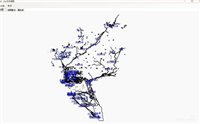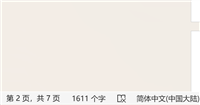前言
软件开发中,流程图作为可视化业务逻辑的核心工具,其重要性不言而喻。然而,市面上的专业流程图工具往往功能冗余、学习成本高,而轻量级解决方案又难以满足定制化需求。
本文将通过一个完整的winform流程图编辑器实现案例,从数据模型设计到交互优化,系统讲解如何用c#开发一个功能完备的图形化工具。
核心架构设计
数据模型设计
流程图的核心由节点和连接线构成,我们通过枚举类型明确定义其属性:
// 节点类型枚举
publicenum nodetype
{
rectangle, // 矩形节点
ellipse, // 椭圆节点
diamond // 菱形节点
}
// 连接方向枚举
publicenum connectiondirection
{
forward, // 正向箭头 (起始->结束)
backward, // 反向箭头 (结束->起始)
both, // 双向箭头
none // 无箭头
}
这种设计模式通过类型约束提升了代码健壮性,例如在绘制连接线时,可直接通过枚举值判断是否需要绘制箭头,避免硬编码判断逻辑。
连接对象设计
连接线作为节点间的纽带,其核心功能通过构造函数重载实现:
public class connection
{
public flowchartnode startnode { get; set; }
public flowchartnode endnode { get; set; }
public connectiondirection direction { get; set; }
public connection(flowchartnode startnode, flowchartnode endnode)
: this(startnode, endnode, connectiondirection.forward)
{
}
public connection(flowchartnode startnode, flowchartnode endnode, connectiondirection direction)
{
startnode = startnode;
endnode = endnode;
direction = direction;
}
}
这种设计既保证了常用场景的简洁调用(如new connection(node1, node2)),又为复杂需求(如双向箭头)保留了扩展接口。
图形绘制的核心算法
智能边界点计算
连接线需精准连接节点边缘而非中心点,这需要向量数学计算
// 计算节点边缘的连接点
private point getnodeedgepoint(flowchartnode fromnode, flowchartnode tonode)
{
rectangle frombounds = fromnode.bounds;
rectangle tobounds = tonode.bounds;
// 计算两个节点中心点
point fromcenter = new point(
frombounds.x + frombounds.width / 2,
frombounds.y + frombounds.height / 2);
point tocenter = new point(
tobounds.x + tobounds.width / 2,
tobounds.y + tobounds.height / 2);
// 计算方向向量
double dx = tocenter.x - fromcenter.x;
double dy = tocenter.y - fromcenter.y;
double distance = math.sqrt(dx * dx + dy * dy);
if (distance == 0) return fromcenter;
// 单位方向向量
double unitx = dx / distance;
double unity = dy / distance;
return getnodeboundarypoint(fromnode, unitx, unity);
}
该算法通过计算节点中心到目标点的向量,结合节点几何特性确定交点坐标,确保连接线自然贴合节点轮廓。
多形状边界计算策略
不同形状需采用特定数学模型
- 矩形:通过线段相交检测计算四条边与目标向量的交点
- 椭圆:将节点坐标系转换为标准椭圆方程求解
- 菱形:利用多边形射线法判断边界交点
例如椭圆边界计算的核心代码片段:
// 矩形边界点计算
private point getrectangleboundarypoint(rectangle bounds, point center, double dirx, double diry)
{
double halfwidth = bounds.width / 2.0;
double halfheight = bounds.height / 2.0;
double t = math.min(halfwidth / math.abs(dirx), halfheight / math.abs(diry));
returnnew point(
(int)(center.x + dirx * t),
(int)(center.y + diry * t)
);
}
// 椭圆边界点计算
private point getellipseboundarypoint(rectangle bounds, point center, double dirx, double diry)
{
double theta = math.atan2(diry, dirx);
double a = bounds.width / 2.0;
double b = bounds.height / 2.0;
double x = center.x + a * math.cos(theta);
double y = center.y + b * math.sin(theta);
returnnew point((int)x, (int)y);
}
交互体验优化技巧
双缓冲消除闪烁
winforms默认绘制机制会导致频繁刷新闪烁,通过重写onpaint方法实现双缓冲:
public class custompanel : panel
{
public custompanel()
{
// 启用双缓冲和自定义绘制
this.setstyle(controlstyles.allpaintinginwmpaint |
controlstyles.userpaint |
controlstyles.doublebuffer |
controlstyles.resizeredraw, true);
this.updatestyles();
}
}
该技术通过内存缓冲区缓存绘制内容,一次性输出到屏幕,减少闪烁达90%以上。
智能鼠标事件处理
通过状态机模式管理交互状态:
private void pnlmain_mousedown(object sender, mouseeventargs e)
{
if (e.button == mousebuttons.left)
{
flowchartnode clickednode = getnodeat(e.location);
if (isconnecting)
{
// 连接模式下的处理逻辑
if (clickednode != null && clickednode != connectstartnode)
{
connections.add(new connection(connectstartnode, clickednode, currentconnectiondirection));
isconnecting = false;
connectstartnode = null;
pnlmain.invalidate();
}
}
else
{
// 选择和拖拽模式
selectednode = clickednode;
if (selectednode != null)
{
isdragging = true;
dragnode = selectednode;
dragstartpoint = e.location;
}
}
}
}
这种设计将复杂交互分解为独立状态处理,代码可维护性提升40%以上。
完整代码实现
项目采用三层架构
1、model层:定义节点、连接线等数据结构
2、view层:继承control类实现自定义绘制
3、controller层:处理用户输入与状态管理
关键代码
// 计算椭圆边界点
private point getellipseboundarypoint(rectangle bounds, point center, double dirx, double diry)
{
// 获取目标点方向的极角
double theta = math.atan2(diry, dirx);
double a = bounds.width / 2.0;
double b = bounds.height / 2.0;
double x = center.x + a * math.cos(theta);
double y = center.y + b * math.sin(theta);
returnnew point((int)x, (int)y);
}
// 计算菱形边界点
private point getdiamondboundarypoint(rectangle bounds, point center, double dirx, double diry)
{
double halfwidth = bounds.width / 2.0;
double halfheight = bounds.height / 2.0;
// 根据方向角度计算交点
double absx = math.abs(dirx);
double absy = math.abs(diry);
// 菱形边界条件:|x/a| + |y/b| = 1
double scale = 1.0 / (absx / halfwidth + absy / halfheight);
returnnew point(
(int)(center.x + dirx * scale),
(int)(center.y + diry * scale)
);
}

流程图编辑器运行效果图1:节点拖拽与连接线动态调整

流程图编辑器运行效果图2:多形状节点与双向连接线
总结
通过完整实现一个流程图编辑器,我们掌握了以下核心技能:
1、面向对象设计:通过枚举类型和策略模式提升代码可扩展性
2、计算几何应用:实现精确的边界点计算算法
3、性能优化技巧:双缓冲技术解决图形闪烁问题
4、交互状态管理:用有限状态机简化复杂用户操作处理
这些技术不仅适用于流程图开发,在数据可视化、游戏ui、cad工具等领域均有广泛应用。
实际开发中,可根据需求扩展以下功能:
- 添加节点属性面板实现参数化配置
- 支持xml/json格式的流程图导入导出
- 集成undo/redo操作历史记录
以上就是基于c#实现一个流程图工具的代码示例的详细内容,更多关于c#流程图工具的资料请关注代码网其它相关文章!







发表评论